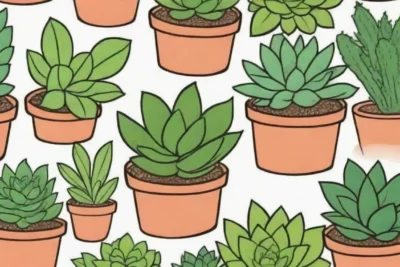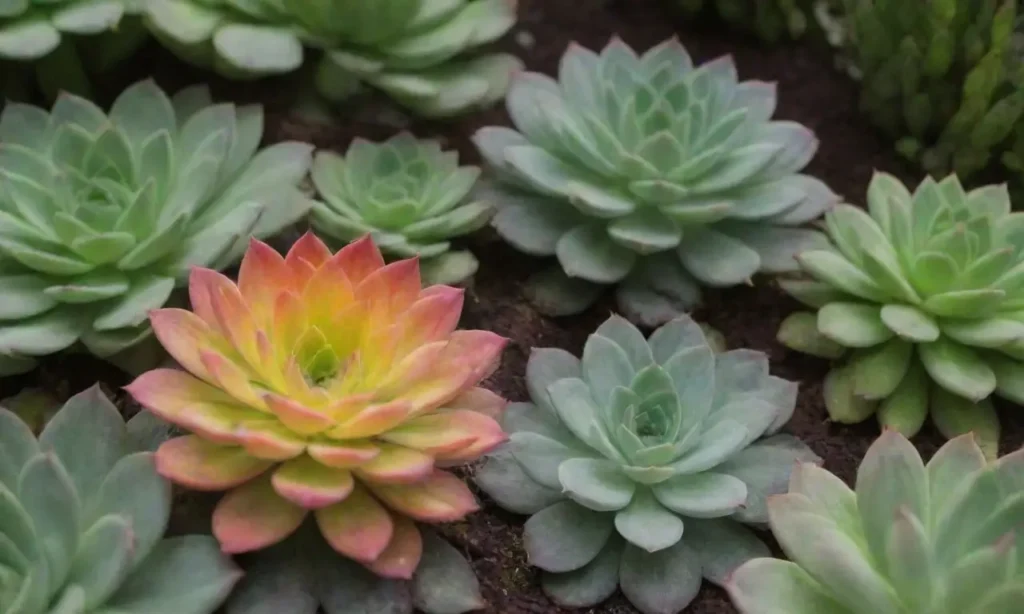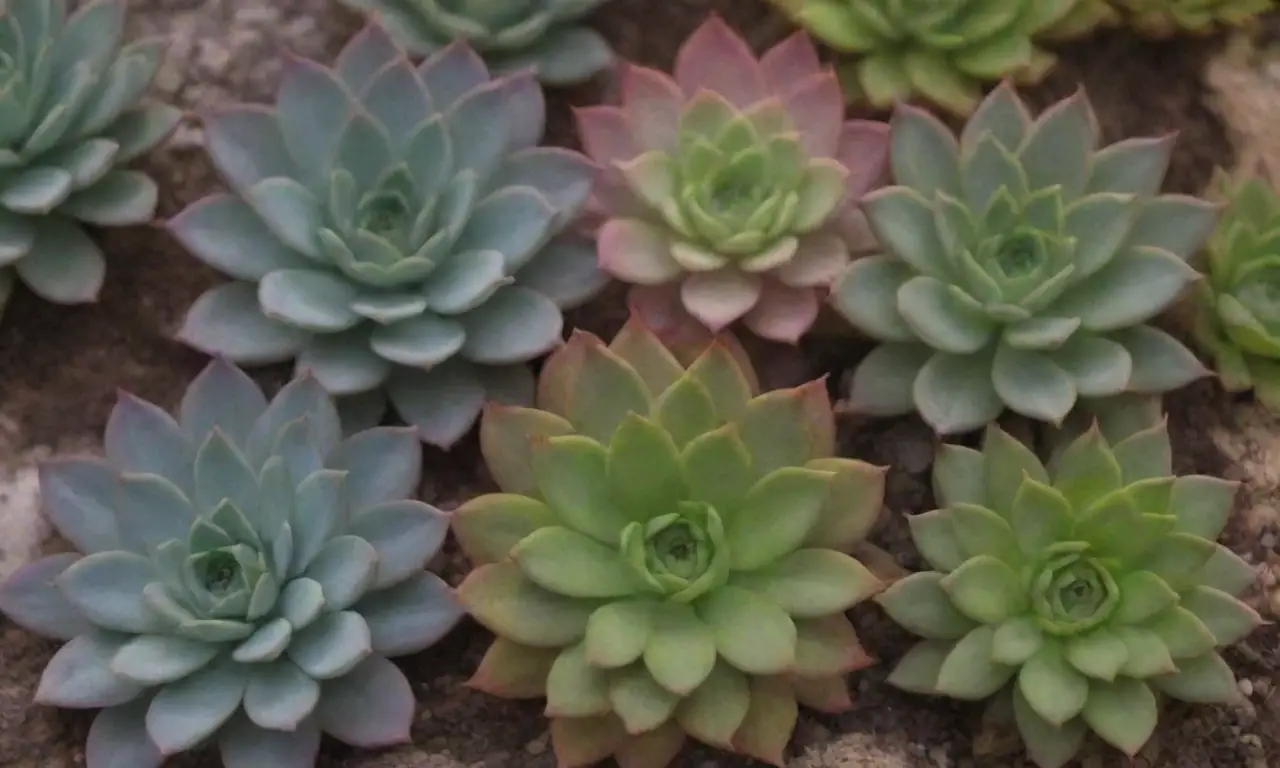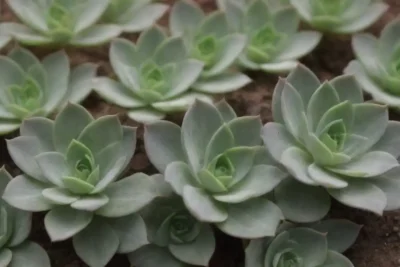
How Succulents Promote Positive Microclimates in Gardens

Introduction
In recent years, gardening enthusiasts and environmentalists alike have increasingly embraced the wonder of succulents. These charming plants not only provide a unique aesthetic but also play a significant role in enhancing the microclimates of gardens. Understanding what microclimates are and how succulents contribute to their formation can greatly improve the overall health and sustainability of a garden space.
This article will delve into the various ways in which succulents promote positive microclimates, focusing on their physical attributes, water retention capabilities, and their influence on surrounding flora and fauna. We'll explore the intricate relationships between these hardy plants and their environments, offering insights and practical advice for utilizing succulents to create thriving and serene garden microclimates.
Understanding Microclimates
Microclimates are defined as small, localized areas that experience different climatic conditions than the surrounding environment. These variations can be caused by several factors, including topography, vegetation, and structure. Understanding microclimates is crucial for successful gardening, as they can significantly impact plant growth, soil moisture levels, and even the presence of certain pests.
In gardens, microclimates help define distinct areas based on the specific requirements of different plants. For instance, areas sheltered by buildings or large trees may have lower wind levels and more consistent moisture, while sunny, open spaces will lead to higher temperatures. Succulents, with their diverse forms and water-storing capabilities, have the unique ability to interact positively with these microclimates by modifying conditions in localized areas.
They can also aid in mitigating extremes by moderating temperature fluctuations and enhancing soil health. By leveraging the unique properties of succulents, gardeners can design spaces that cater not just to the succulents themselves but also enrich other life forms, from pollinators to soil microorganisms.
The Benefits of Succulents in Garden Microclimates
Water Retention and Soil Health
One of the most remarkable attributes of succulents is their ability to store water in their leaves, stems, and roots. This trait is particularly advantageous in regions with erratic rainfall or prolonged dry spells. By incorporating succulents into garden designs, gardeners can create a positive microclimate with improved soil moisture levels.
Succulents, through their extensive root systems, help maintain soil structure, preventing erosion and promoting healthy microbial activity. This, in turn, leads to improved nutrient availability for other plants. When interplanted with other species, succulents can create an ideal environment for biodiversity as they influence the soil ecosystem positively. This balance enhances the overall productivity and resilience of the garden.
 Succulents as a Tool for Environmental Education and Awareness
Succulents as a Tool for Environmental Education and AwarenessMoreover, the large surface area of succulent leaves offers shade to the soil below, reducing evaporation rates. This function is particularly critical in hot climates, where soil moisture can be rapidly lost to the sun. By creating a canopy effect, succulents facilitate the maintenance of cooler soil temperatures and foster conditions that sustain a wider variety of beneficial microorganisms.
Temperature Regulation
Succulents also aid in temperature regulation within garden microclimates. During periods of extreme heat, their fleshy leaves can capture the sun's energy rather than reflecting it, creating areas of shade that help cool their surroundings. This natural cooling effect nurtures a stable environment for other plants, allowing them to thrive under otherwise harsh conditions.
Furthermore, succulents release moisture back into the air through a process known as transpiration. This not only contributes to humidity levels but also lowers local temperatures, creating a more favorable climate for the growth of various plants. For instance, areas populated with succulents may experience less heat stress, allowing for the introduction of less drought-resistant species like herbs or flowers, which can benefit from the shade and moisture provided.
The ability of succulents to retain heat during cooler nights is equally crucial. At night, they will slowly release heat absorbed from the sun, leading to a more stable temperature environment. This phenomenon, often referred to as the heat island effect, contributes to the sustainability of the surrounding ecology and allows other sensitive plants to flourish as well.
Enhancing Biodiversity
In addition to temperature regulation and water retention, another significant benefit of succulents lies in their ability to enhance biodiversity. These plants often serve as hosts for various insects, attracting essential species that contribute to pollination and overall ecosystem health. By introducing succulents into a garden, gardeners create habitats for insects, which in turn promote a balanced ecosystem.
For example, many succulents exhibit unique flowers that attract bees and butterflies, encouraging these essential pollinators to visit the garden. The pollination process enhances reproduction rates among other flowering plants, making succulents an essential component for gardens aiming for biodiversity.
Moreover, the dense foliage provided by succulents offers protection against predators for other beneficial insects. By creating sanctuary areas for these creatures, gardeners inadvertently promote a balanced pest population, reducing the need for chemical pesticides and fostering a more natural and harmonious ecological setting.
 Using Succulents to Combat Urban Sprawl and Green Spaces
Using Succulents to Combat Urban Sprawl and Green SpacesBest Practices for Using Succulents in Gardens

Selecting the Right Succulents
Choosing the right types of succulents is fundamental to ensuring their positive impact on microclimates. Different species adapt to varying sunlight, water, and soil conditions. Depending on the specific goals of the garden—such as creating shade, conserving water, or attracting wildlife—gardeners should research and select succulents that correspond to those needs.
For instance, Aloe Vera is a popular choice due to its medicinal qualities and ability to thrive in less-than-ideal soil while attracting bees during blooming season. Sedum, on the other hand, offers vibrant blooms and an extended blooming season, and is well-adapted to poor soils, making them ideal for ground cover. Understanding the specific needs and characteristics of various cultivars will allow gardeners to create a symbiotic environment that nurtures the succulents while enhancing overall garden microclimates.
Designing the Garden Layout
When designing a garden layout, it is crucial to consider how the placement of succulents will influence other plants and the overall environment. Grouping succulents together to maximize their benefits can create a microclimate that positively influences neighboring plants. For instance, clustering specimens with larger growth habits can be advantageous for shielding smaller, more delicate species from strong winds or harsh sun rays.
Beyond placement, the use of hardscape elements, such as rocks or patio stones, can further support succulents by serving as heat accumulators. Hardscape materials absorb heat during the day and release it as temperatures drop at night, offering a stability that benefits the entire ecosystem.
Maintenance and Care
Lastly, while succulents are renowned for their low maintenance requirements, incorporating them into microclimates does necessitate certain standard maintenance practices to ensure their health. This includes proper watering, despite their drought-tolerant nature. Overwatering can be detrimental, as succulents are prone to rot; thus, an irrigation system and monitoring plan should account for local rainfall patterns.
Regular pruning helps maintain airflow and sunlight penetration among succulents and other plants, which can prevent fungal infestations and promote healthy growth. Furthermore, mulching with organic materials not only conserves soil moisture but also adds essential nutrients back into the ground, particularly as it decomposes.
 Understanding the Role of Succulents in Urban Ecosystems Today
Understanding the Role of Succulents in Urban Ecosystems TodayConclusion
Succulents represent a unique opportunity for gardeners seeking to create positive microclimates that foster biodiversity, enhance soil health, and regulate environmental conditions. By understanding how these hardy plants interact with their surroundings, gardeners can harness their capabilities to create thriving ecosystems that benefit a range of flora and fauna.
Through the benefits of water retention, temperature regulation, and biodiversity enhancement, succulents contribute significantly to the sustainability and vitality of garden spaces. As we faced challenges surrounding climate change and environmental sustainability, gardeners should consider using succulents as functional allies in achieving a resilient and flourishing garden.
By selecting the right types of succulents, thoughtfully designing garden layouts, and adhering to best maintenance practices, enthusiasts can create thriving microclimates conducive to plant health, picturesque beauty, and environmental stability. In coming years, embracing succulents may very well become an essential practice for any eco-conscious gardener. This simple yet impactful choice can lead to a transformative gardening experience characterized by life, growth, and resilience amidst a changing environment.
If you want to read more articles similar to How Succulents Promote Positive Microclimates in Gardens, you can visit the Environmental Benefits category.


You Must Read